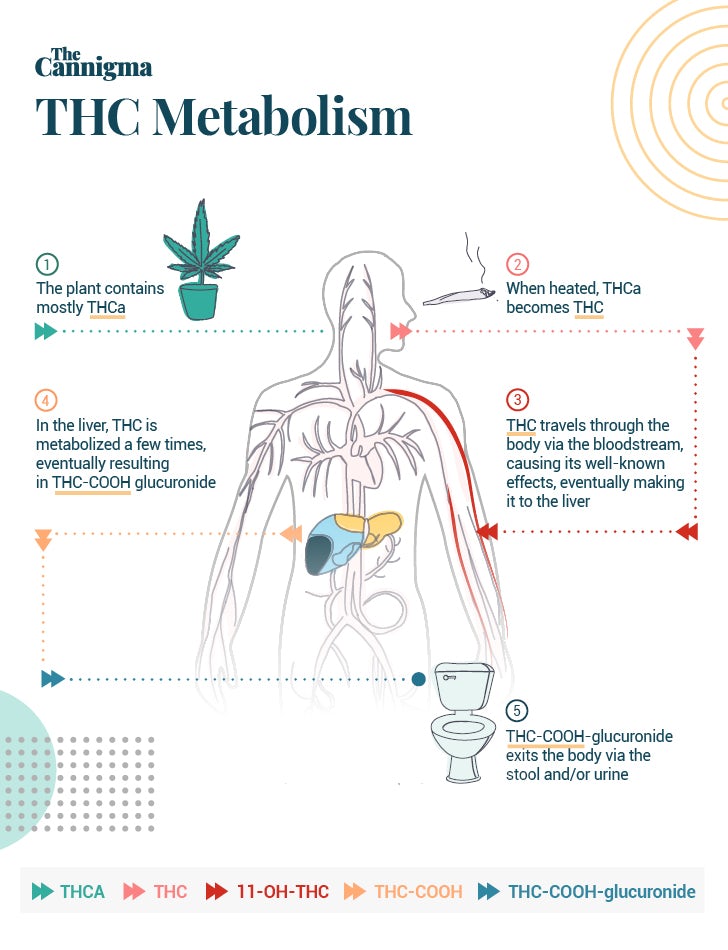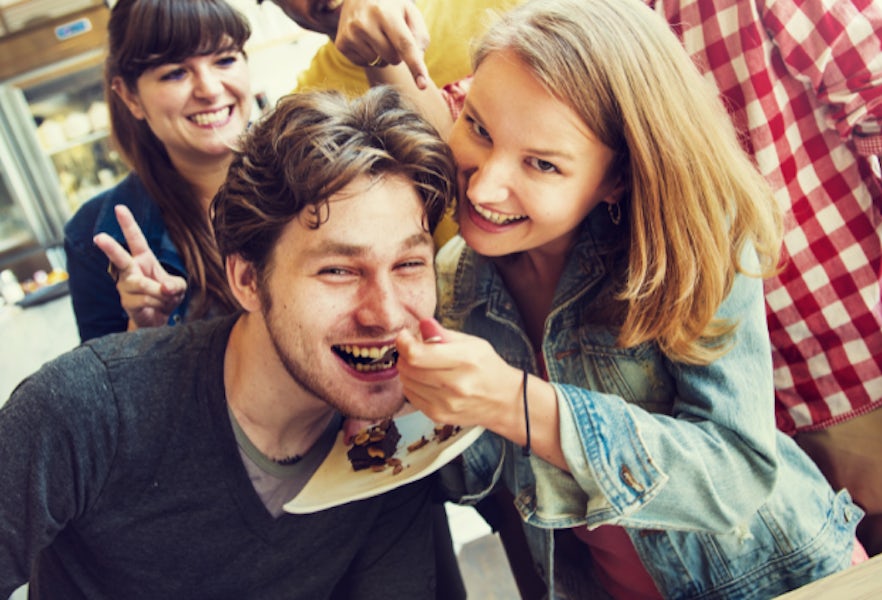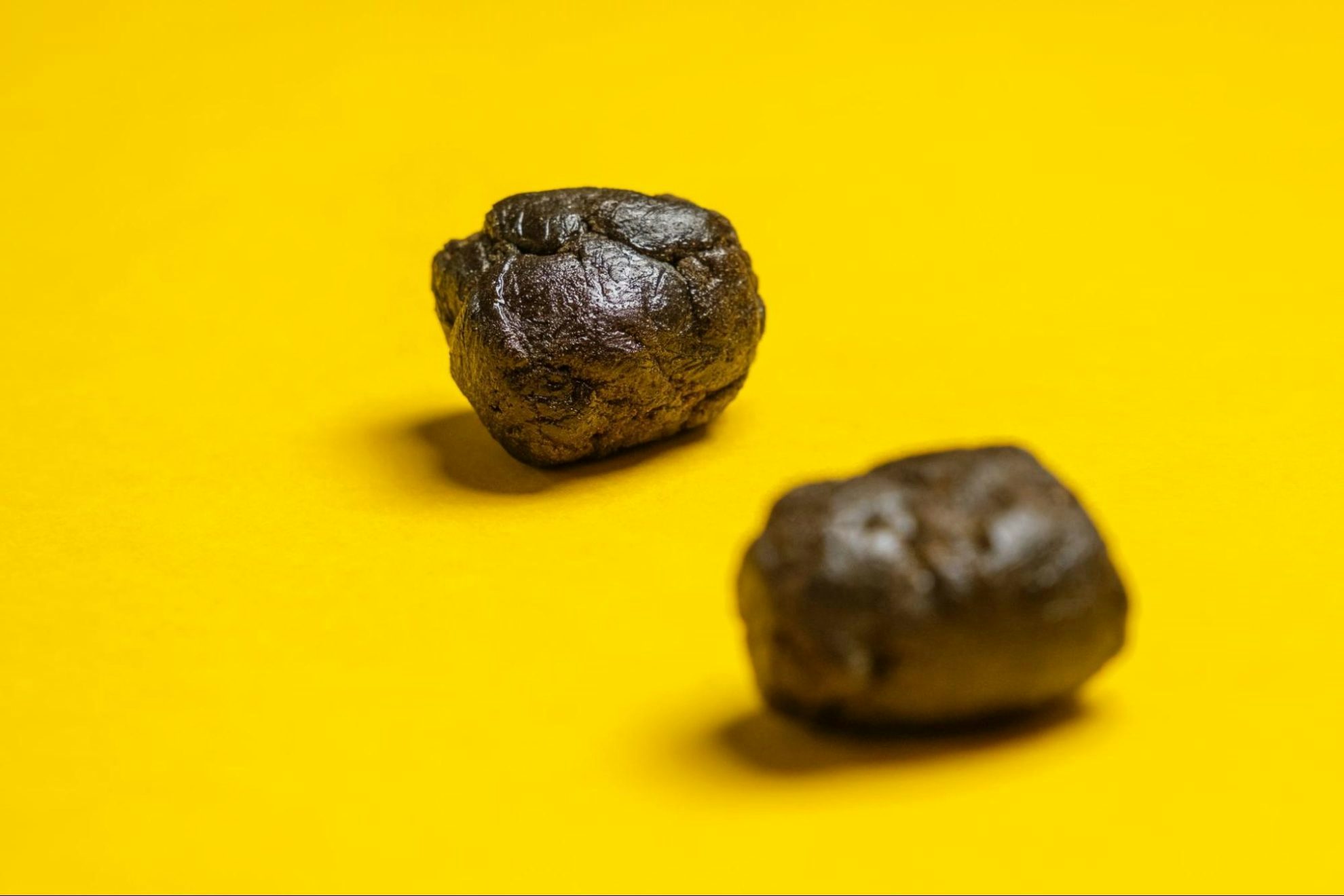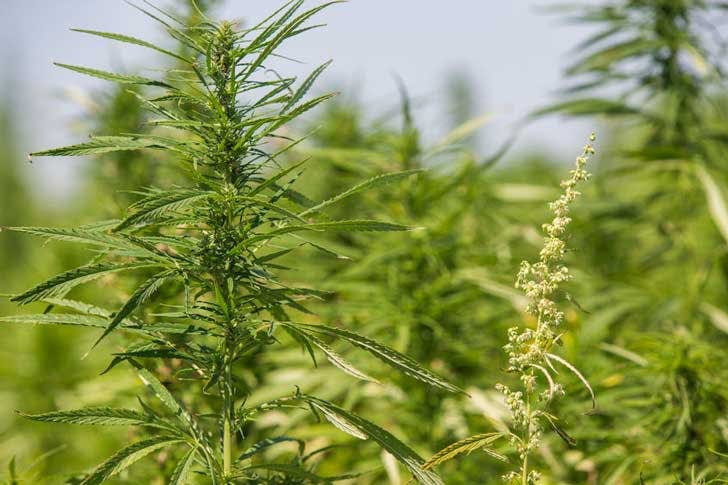It’s one of the greatest debates in cannabis: to smoke or to eat?
Both smoking and edibles have a long, storied history within the cannabis community, and the divide over the superior way to consume is fierce.
But how do smoking and edibles affect you? What can you expect with each one, and how does this info help you further customize your cannabis consumption?
Let’s dig in.
How edibles work
Edibles is a broad term for any cannabis-based food or drink. The most famous edibles are brownies and gummies, but in theory any dish or beverage can be infused. Additionally even though many cannabis oils are touted as tinctures and claimed to absorb through the lining of your mouth, most of the cannabinoids are still taken orally, making oils and tinctures fairly similar to traditional edibles.
Edibles are a popular way of consuming cannabis, with over half of respondents choosing them as their favorite method in a 2021 survey.
Their popularity comes from the ease of consumption (no smell or smoke to worry about) and for the control over the dose. Edibles can range from low doses of 2.5mg to extraordinarily high doses of 100mg or more, but every store-bought edible is labeled, and it’s generally easy to cut them up to make smaller doses.
Infused edibles work by first traveling through the stomach and into the small intestines, where cannabinoids are absorbed into the bloodstream. From there, and before being sent to the rest of the body, these cannabinoids must first be sent through the liver, which acts as a filter and detoxifier. As THC and other cannabinoids pass through the liver, they are transformed (metabolized) into other molecules, some of which can be highly psychoactive. Most commonly, THC molecules are converted into 11-hydroxy-THC, a powerful metabolite that can be more than twice as strong as THC itself, which is why edibles can hit so much harder than smoking. 1 2
Since edibles are broken down in the digestive system, they can take a while to “kick in,” often taking between one or two hours for effects to be felt. But 11-hydroxy-THC has a longer half-life than THC, so the high will also last longer. The delayed effects can lead some people to over consume on edibles and green out.
Some people report trouble getting high with edibles, which can be due to diet, digestive issues, genetic differences, individual metabolism, THC tolerance or a number of other reasons.
How smoking works
Smoking cannabis is a consumption method where you inhale smoke, typically from a bowl, joint, or bong, but it can also include vaping and dabbing.
When you smoke weed, THC and other cannabinoids are heated to high temperatures and delivered to the system rapidly through the lungs, into the bloodstream and then into the brain. Smoking is the classic way to consume cannabis because it’s fast and easy.
Unlike edibles, which can take over an hour to work, the effects of smoking kick in nearly instantly, with the experience peaking before or around 30 minutes. But easy come, easy go – the high from smoking wears off faster, usually subsiding in around 3 hours. Depending on the person and the dose, one may continue to feel effects for up to 6 hours after inhaling cannabis.
Some cannabis enthusiasts feel that smoking gives you more control over your high because of how quickly it works. Smoking weed makes it highly bioavailable, with 10 – 30% of the THC getting absorbed into your bloodstream.
But smoking is not for everyone, particularly people with existing respiratory issues or those who find they have sensitive lungs. Using a lighter (or a hemp wick) to create combustion can also create some harmful byproducts of smoke, which may be irritating to the lungs.
Technically, smoking is different from vaporizing. Although vaping still uses a heat source to produce vapor, much lower temperatures are involved and there is no physical combustion of plant material. Vaping creates less harmful smoke-like byproducts, and also reduces the potential for cannabinoids to transform, like THC to CBN.
Dabbing is a specific type of vaping, sometimes called flash vaporization, that usually involves higher temperatures than vaping, but often less hot than the flame of a lighter or ember of a joint. 3
Edible Dosing Calculator
You can use flower or any cannabis concentrate, as long as you know the THC/CBD content.
How strong is your cannabis?
Different ways to smoke cannabis:
How your body metabolizes cannabis

Comparing edibles and smoking
There are many differences between smoking and edibles, but one of the most common questions is if one is cheaper than the other. The answer is not clear cut, as prices and potency vary by state and either method can quickly add up, depending on your consumption frequency.
Smoking delivers cannabinoids quickly to the lungs, and the heat with smoking can destroy and transform cannabinoids and terpenes. This is generally not a good thing, but there is also the potential to transform THC into CBN, which could have significant effects on the high produced.
And when it comes to making affordable edibles at home, while it may be more efficient, it’s not always easy to know exactly how much is in each edible. This is no big deal to the experienced user, but to a new user a few milligrams of THC can have a major impact on their experience
The biggest bang for your buck is probably to buy cannabis flower, use it in a table vaporizer, and then make edibles with this ABV. That way if there is anything leftover in your bud then you extract it and infuse it into food. But as if estimating the potency of your homemade edible wasn’t hard enough, using ABV to make edible will leave you flying blind on your dose per edible, so start low and go slow!
| Edibles | Smoking | |
|---|---|---|
| Onset | 60 – 120 minutes | 2 – 10 minutes |
| Peak | 2 – 4 hours | 15 – 30 minutes |
| Duration | 6 – 12 hours | 2 – 4 hours |
| Social acceptance | Less obvious, more acceptable | Less publicly acceptable, mostly due to smell |
| Practicality | More discreet | Almost instant effects |
| Tolerance | Less - There is some tolerance building to edibles, but it may develop more slowly if doses are kept stable | More - Because of the high blood levels achieved with inhalations, tolerance is more likely to built with this consumption method |
| Delivery method advantages | High lasts longer High can be stronger (11-OH-THC) Easier to control the dose More approachable for new users | 10 – 30% THC bioavailability Works quickly Less likely to overconsume Easier to titrate to effect |
| Delivery method disadvantages | Limited THC bioavailability (~10%) Won’t work for everyone Easier to overdose Variable onset and response | Can be damaging to lungs long term High won’t last as long Harder to measure the dose Smoke/vapes can be off-putting for new users |
Edibles v Smoking: drug tests
One area where edibles and smoking don’t differ is staying in your system. No matter how you consume it, THC consumption can make you fail a drug test.
That’s because THC and its metabolites are stored in fat tissue, which means it’s slow to leave the body. In order to pass a drug test, you’d ideally stop consuming cannabis in any form for at least 7 days, although longer is better. A full detox regimen can include exercise, water, activated charcoal, and fatty food consumption.
Are edibles or smoking right for you?
If you don’t enjoy the smell or feeling of smoking, choose edibles. If you cannot smoke for medical or other reasons, edibles present a discreet and easy method of consumption. If you have digestive issues, some users report smoking may be a better option, and can settle an upset stomach.
However, if you’re not sure which to choose, consider the following:
- Onset: how quickly do you want to feel the effects?
- Duration: how long do you want the effects to last for?
- Effects: are you dealing with an acute issue like a headache, or do you want to reduce inflammation and combat a chronic issue?
- Dosing: how much cannabis do you want to consume? Edibles have a fixed amount of THC and are easy to divide up.
- Location: where are you consuming, and is smoking prohibited?
- Sex: Cannabis affects men and women differents. Women may produce more 11-hydroxy-THC, making edibles more potent. 4
- Layering consumption methods: you don’t actually have to choose! The long acting actions of edibles once or twice a day can serve as a base, and inhalation can be reserved for only when breakthrough symptoms occur or specific effects are desired.
Bottom line
When it comes down to it, whether you prefer smoking or edibles is a personal choice. While smoking can create harmful byproducts during combustion, it’s also easier to titrate up your dose with another puff, and the risk of taking too much and having a bad experience is lower. Edibles are more subtle, and the delayed onset means it’s easy to get inpatient and take too much, but they can be a powerful tool and a lot of fun, too.
Understanding how each consumption method affects you and which you prefer allows you to further customize your cannabis experience to tailor it to your personal needs, which means better chances of a positive experience.
Sources
- Huestis MA. Human cannabinoid pharmacokinetics. Chem Biodivers. 2007;4(8):1770-1804. doi:10.1002/cbdv.200790152
- Lemberger L, Martz R, Rodda B, Forney R, Rowe H. Comparative pharmacology of Delta9-tetrahydrocannabinol and its metabolite, 11-OH-Delta9-tetrahydrocannabinol. J Clin Invest. 1973;52(10):2411-2417. doi:10.1172/JCI107431
- Schauer GL, Njai R, Grant-Lenzy AM. Modes of marijuana use – smoking, vaping, eating, and dabbing: Results from the 2016 BRFSS in 12 States. Drug Alcohol Depend. 2020;209:107900. doi:10.1016/j.drugalcdep.2020.107900
- Matheson, J., Sproule, B., Di Ciano, P. et al. Sex differences in the acute effects of smoked cannabis: evidence from a human laboratory study of young adults. Psychopharmacology 237, 305–316 (2020). https://doi.org/10.1007/s00213-019-05369-y
Sign up for bi-weekly updates, packed full of cannabis education, recipes, and tips. Your inbox will love it.

 Shop
Shop Support
Support
















